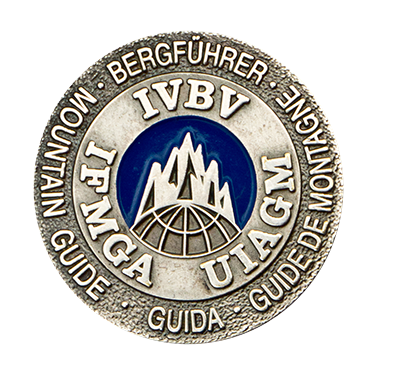The Wrangell Mountains bulge 100 miles north from the Saint Elias Mountains. They are characterized by sprawling glacier neves and several of North America’s highest peaks including Mount Sanford (16,237’) and Mount Blackburn (16,390’). We'd never visited the Wrangells. Adventure time.
For the trip I recruited Dylan Taylor, an IFMGA guide who lives the international life in France, Alaska, Antarctica and Colorado; and Danny Uhlmann, an aspirant guide who also lives in steep and cold regions of the world. This was my fifth Alaska expedition with Dylan, but my first with Danny. I'd met Danny only once, but Danny toted a bulbous resume, both guiding and personal. Both Dylan and Andrew Wexler stamped Danny's Brother Passport, so I knew we were destined for some lengthy excursions.
Over eight days Danny, Dylan and I battled creepy conditions through dramatic terrain. Despite the harsh conditions, we nailed the trip in typical fashion: moving as an inseparable group, laughing at every break and thriving on tough decisions.

First decision: is the pilot on our side or not? Here, Gary Green, owner of McCarthy Air, is beta-loading Danny and Dylan. We quickly learned that Gary is the man.
Our plans often make drastic changes after talking with the pilot. In 2009, the pilot informed Matt Hage and I that we would land on the opposite side of Mount Chamberlin than planned. That's Alaska. Carry lots of maps.

Gary gassing the world's last piston Pilatus Porter. All other Porters, like Mount Cook Ski Planes, have been modified to turbo. Gary is hand fueling since his fuel truck blew it's gas line.

Hoofing it from Solo Creek where Gary dropped us, through a heard of caribou to the Middle Fork Glacier. We carried 10 days of food into the unknown.

High winds in the Middle Fork Glacier formed hair-trigger avalanche slabs around our camp. Trapped, we spent all day deciphering a route through the surrounding walls. That evening we moved one mile and 1,500 feet and camped, still stumped about a safe route out of the Middle Fork Glacier.

Day four, tiptoeing over crevasses and watching the avalanche runnout angles. Notice the fresh avalanche in the background. Danny triggered this face from 300 feet away. The weak layer was the interface between two feet of winter snow and the glacier ice. It was a bony season in the eastern Wrangells.

Dylan probing for crevasses at 9,000 feet between the Middle Fork Glacier and the Chisana Glacier. The shallow snowpack hid crevasses with thin bridges making travel slow and scary.

Small slots, but enough to keep us tied together like dogs and nervous about every step.

Finally, no crevasses, but it was flat. We honed our slogasaurus maximus skills on the Chisana glacier.

Powder skiing! Another 10,000 vertical feet of this would be nice.

"Whoa! Let's get that rope back out!" Each time we unroped we'd punch a ski pole through a bridged crevasse. We carried two 30 meter ropes. If an unroped rope-carrier slotted himself, then another rope was still available to fish him out.

Back to groping through crevasses. Roped together and expecting every step to send us into a black abyss.

The bedtime ritual–where to next? On our sixth night we opted for the Nizina River valley back to McCarthy. The Wrangells were showing us great adventure, but we craved real skiing with speed and summits and no nefarious crevasses or insipient avalanche weak layers.

From Chisana Pass we skied 25 miles down Whiskey Hill, Rohn Glacier and the Niza Glacier to this Nizina proglacial lake.

The Alaskan lowlands in spring mean hungry bears. On day six we saw four bears. At night we balanced pots and ice axes on top of our food bags. We'd launch the fireworks if we heard the pots clattering as a bear rummaged in our food bags.

Every real Alaska trip must have bushwacking. Here Dylan tosses his skis through cottonwood, devil's club, rose bushes and alder near the Nizina road to McCarthy.

Ninety-five miles and 9,000 vertical feet through the Wrangells with two great friends. Thanks buddies!
Huge Thanks To Osprey Packs and the Shipton-Tilman Grant for making this trip possible.

